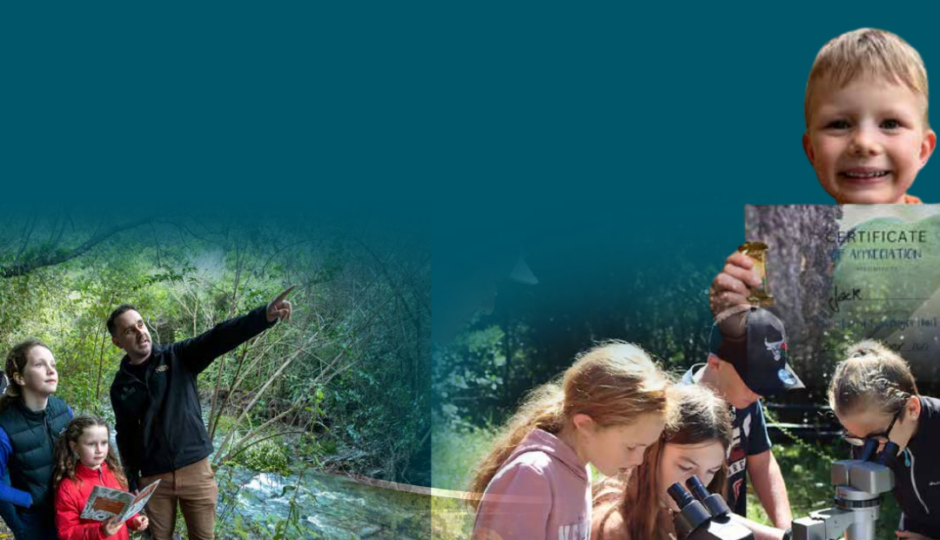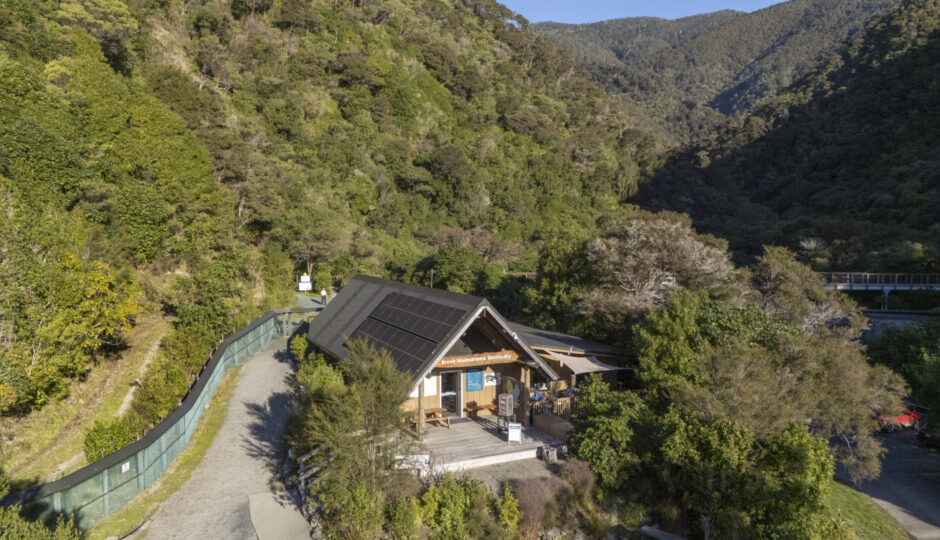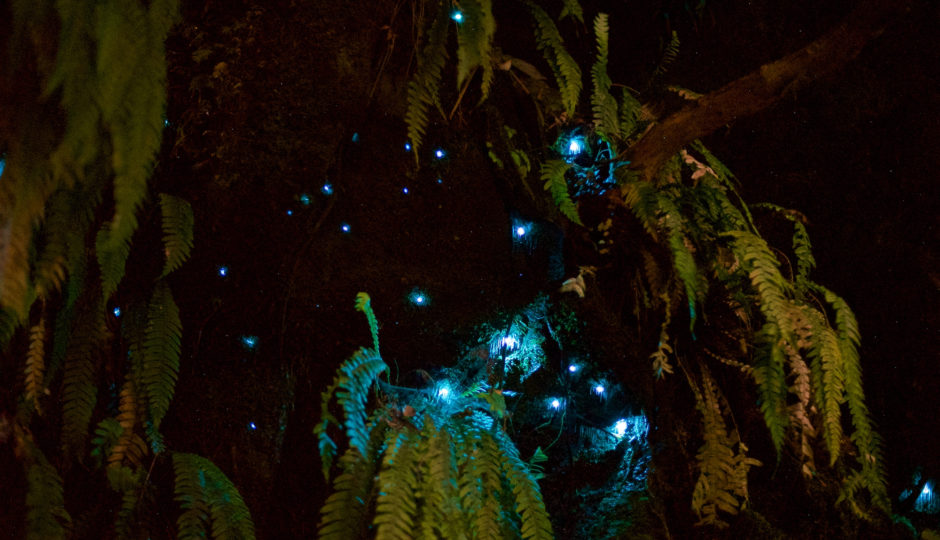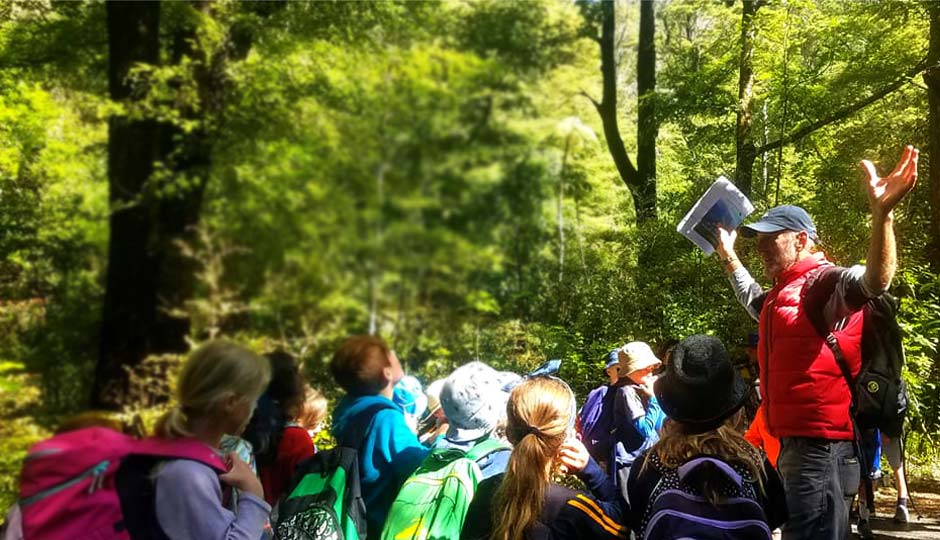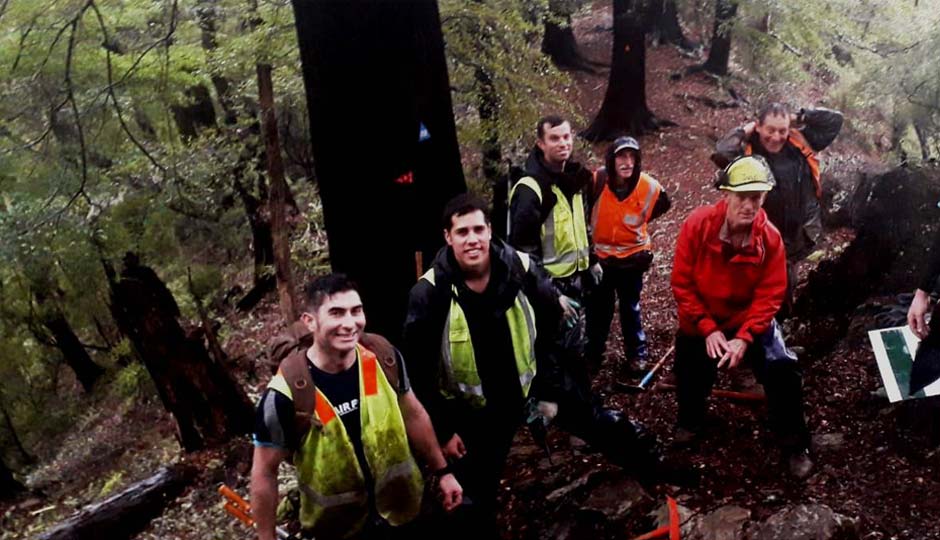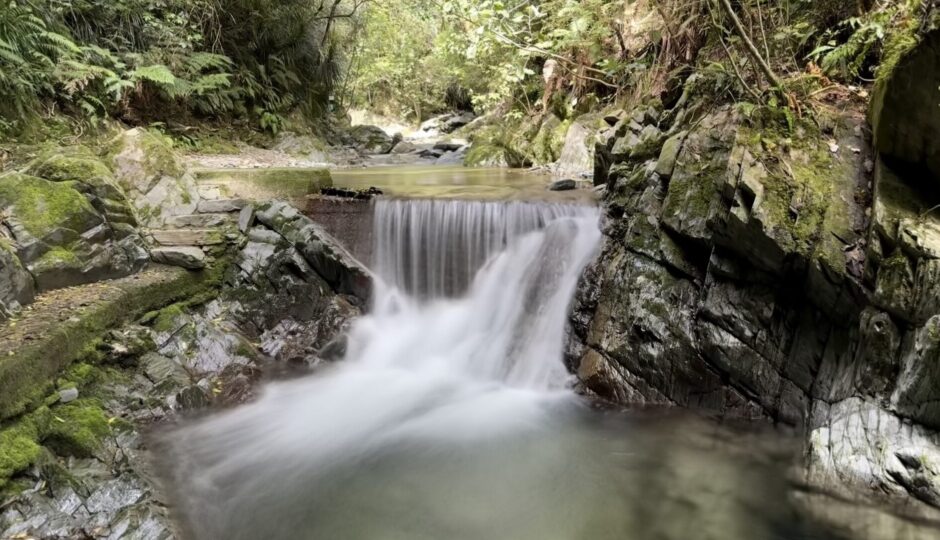Welcome to The Brook Waimārama Sanctuary – an extraordinary part of New Zealand.
Just minutes from Nelson’s city centre, the Brook Waimārama Sanctuary is the South Island’s largest fully fenced eco-sanctuary—690 hectares of protected native forest alive with rare and threatened species. This is a place where you can reconnect with nature, breathe deeply, and experience the mauri (life force) of Aotearoa’s unique environment.
Home to iconic species like the kiwi, tuatara, and kākāriki, the Sanctuary offers self-guided exploration across 15km of walking tracks, as well as guided day and night tours.
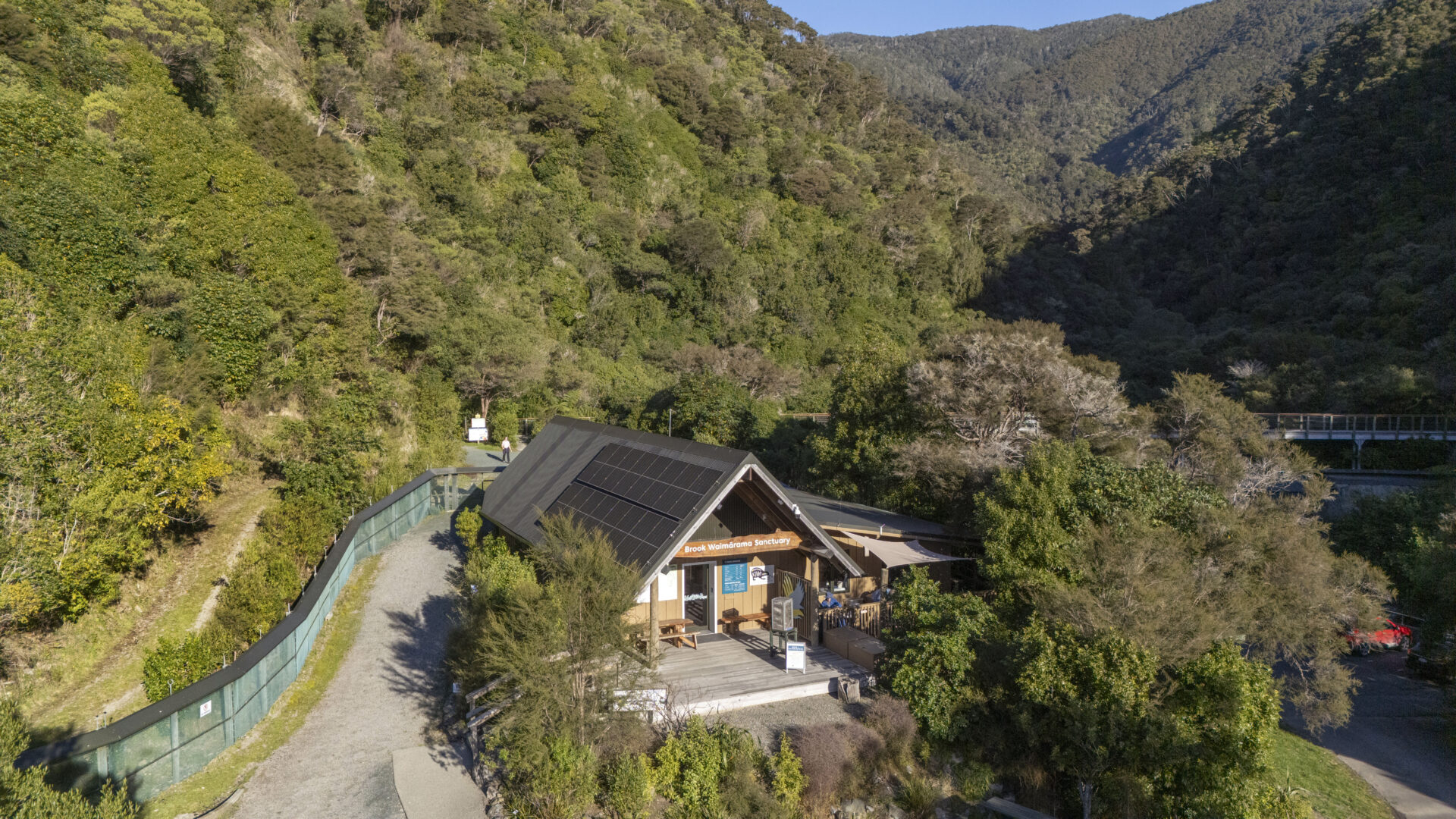
Find us on Instagram
Share your photos with #brooksanctuary
Spring Photography Competition Winner ☀️📸
Our spring photography competition winner is Helen Power, with this brilliant shot of a kakaruai (South Island robin), with a delicious insect snack in its beak.
A huge thank you to everyone who entered. We received 30 photos from 12 photographers, and loved seeing the Sanctuary through your lenses.
Prize pack for Helen includes:
🎟 A family ticket to a guided night tour
📰 A feature in our newsletter and on social media
🖼 A printed and displayed photo at the Visitor Centre (coming in the New Year)
Ngā mihi nui as well to Nelson City Framers for producing a beautiful print to be awarded to Helen.
👉 Now it’s your turn: Summer Photography Competition entries are open.
Get out on the tracks, look for those sunny ngahere moments, and start snapping — we can’t wait to see what you capture.
#BrookWaimāramaSanctuary #Whakatū #NelsonNZ #toutouwai #southislandrobin #naturephotography #springinthenativeforest #summerinthenativeforest #conservation
Dec 17

Ngā mihi nui to our Volunteer BBQ supporters 💚
A big thank you to the generous local businesses who helped us put on a well-earned BBQ for our volunteer whānau. Your support helps us celebrate the people who give their time to protect and restore the ngahere at the Sanctuary.
Special thanks to:
• Booster Wine Group
• @hecksmallgoods
• Pestell’s Rai Bacon Company
• @chiasisters
• @@musselinngoldenbay
To our volunteers: thank you for the mahi you do, week in and week out. We’re so grateful to have you in our community.
If your business would like to support our volunteers or conservation work, we’d love to hear from you.
#BrookWaimāramaSanctuary #VolunteerBBQ #Whakatū #NelsonNZ #TeTauIhu #CommunitySupport #ConservationVolunteers
Dec 17

Threatened Orchid Found!!!
Gastrodia cooperae, a rare parasitic orchid, was found by orchid enthusiast marianw (INaturalist). The orchid is listed as Threatened - Nationally Critical, making this a very significant find.
The orchid spends much of the year underground as a starchy potato-like tuber, feeding off of fungi among the leaf litter. Come December, the plant sends up a tall stem covered in fragrant flowers. The plant produces no green chlorophyll, like most plants and has a variable black to creamy white colour. The sweet-smelling flowers and the tubers are sought after by deer, pigs and possums. The plant is now protected within the Sanctuary, where the flowers are just sought after by native pollinators like flies, beetles and small native bees. This find coincides with the upcoming Gastrodia cooperae survey this week. If you are interested in joining this endeavour, please email henry.hart@brooksanctuary.org.nz
The Sanctuary doesn`t just provide long-term protection for birds, but for the ecosystem as a whole, including the many native orchid species which have become brilliantly abundant here thanks to the removal of ungulates.
📸 Photography by marianw
Dec 16

Summer fledglings are falling from the sky 🐣– here’s what to do if you find a young bird or even get hit on the head by one??
Summer is well on the way, which means there are once again many baby birds fledging everywhere. Often, young birds leave the nest before they are fully fledged. The parent birds will stay close by to keep feeding their offspring.
The kākāriki in this photo is a good example. This young bird fell out of a tree and even bounced off the head of our avid photographer and friend of the Sanctuary, Charley Cross, before landing in the leaf litter. At first, this fledgling looked injured, but it soon got up and attempted to fly again, getting a few metres away before stopping to figure out what just happened. Whoever said learning to fly was easy?
So, what should you do if you find one of these ‘underaged’ birds?
Inside the Sanctuary
In almost every case you can leave the bird where it is. The Sanctuary is a safe place for young birds, even if they are still unable to fly. Birds, especially young birds, are highly sensitive to stress, and taking them away from their parents’ care will reduce their survival chance significantly.
If you are concerned a bird might be injured, sick, or stuck:
📸 Take a photo
📍Note the exact location
📞 Contact staff at the visitor centre
If you find a dead native bird, please also take a photo, note the exact location, and contact staff.
Outside the Sanctuary
If a bird on the ground is in immediate danger from cats or dogs, you can try to put the bird back up in a nearby tree.
If the bird is injured or sick, you can take it to Stoke Veterinary Hospital. If it is a native bird, contact DOC on 0800 DOC HOT (0800 362 468).
For further information, see the Wildlife Hospital website:
Especially once avian influenza has reached Aotearoa, it is not advisable to handle wildlife at all. The virus is highly contagious and can be a threat to human health.
Thank you so much for your support in helping our manu through this busy fledgling season. 💚
Look out for more on this subject in our next blog post from Steffi
📷 Photo: Charley Cross
Dec 11

Ngā mihi nui to Booster Wine Group and @wwfnz 🦎💚
Back in November 2024, generous support from Booster Wine Group ($9,447), WWF-New Zealand ($15,000) and other generous donors who helped make our tuatara translocation possible, returning these ancient reptiles to their ancestral home here in Whakatū Nelson - add with support and guidance from Ngati Koata who are the kaitiaki
Their funding supported key costs such as specialist animal care, transport, habitat preparation and ongoing monitoring for the 56 tuatara now living safely inside our predator-free enclosure at the Sanctuary.
We’re incredibly grateful for partners like Booster Wine Group and WWF-New Zealand, whose commitment to conservation creates a lasting legacy for tuatara and for everyone who visits the Sanctuary to learn about these remarkable taonga. 🌿
Dec 10

🌿 Ngahere Neighbourhood: koru of the mamaku (black tree fern)
Few sights in the ngahere are as iconic as the unfurling koru of a mamaku (Sphaeropteris medullaris). These towering tree ferns can reach up to 20 metres tall, with elegant black trunks patterned by hexagonal scars from fallen fronds.
Their massive fronds can stretch over five metres long, arching high above the forest floor to form a shady green canopy. The stalks and undersides are covered in small, spiny-edged scales — a key feature that helps distinguish mamaku from other large tree ferns.
Mamaku are widespread across Aotearoa, especially in lowland and coastal forests of the North Island and the wetter regions of the South. As new fronds uncurl, the koru shape symbolises new life, growth, and renewal — a form that continues to inspire art, design, and our connection to nature.
🔎 Species: Sphaeropteris medullaris
🟢 Conservation status: Not Threatened
📸 Photo by Rebecca Bowater
#NgahereNeighbourhood #BrookSanctuary #NativePlants #FernFriday #Mamaku #Koru #NewZealandNature #Conservation
Dec 9

